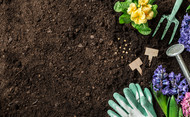The right tools make all the difference when it comes to stress-free weeding.
With gardening comes a lot of joy: The pleasure of the planting itself, the thrill of watching seeds germinate, the satisfaction of seeing plants thrive. But also with gardening comes a lot of work: The digging, the watering, the pest control, and, of course, the most dreaded of all garden-related tasks—weeding.
Every gardener knows the drill. You weed in the spring to prepare your beds for planting, and then you weed all summer as your plants grow, and then you weed well into the fall, just to keep things tidy. It feels like, for gardeners, there are three things one can’t escape: death, taxes and weeding as a constant, back-breaking chore.
The good news is: Weeding doesn’t have to be stressful or back-breaking or such a horrible chore at all. Here are 5 tips to help you make your weeding easy and stress-free this gardening season.



